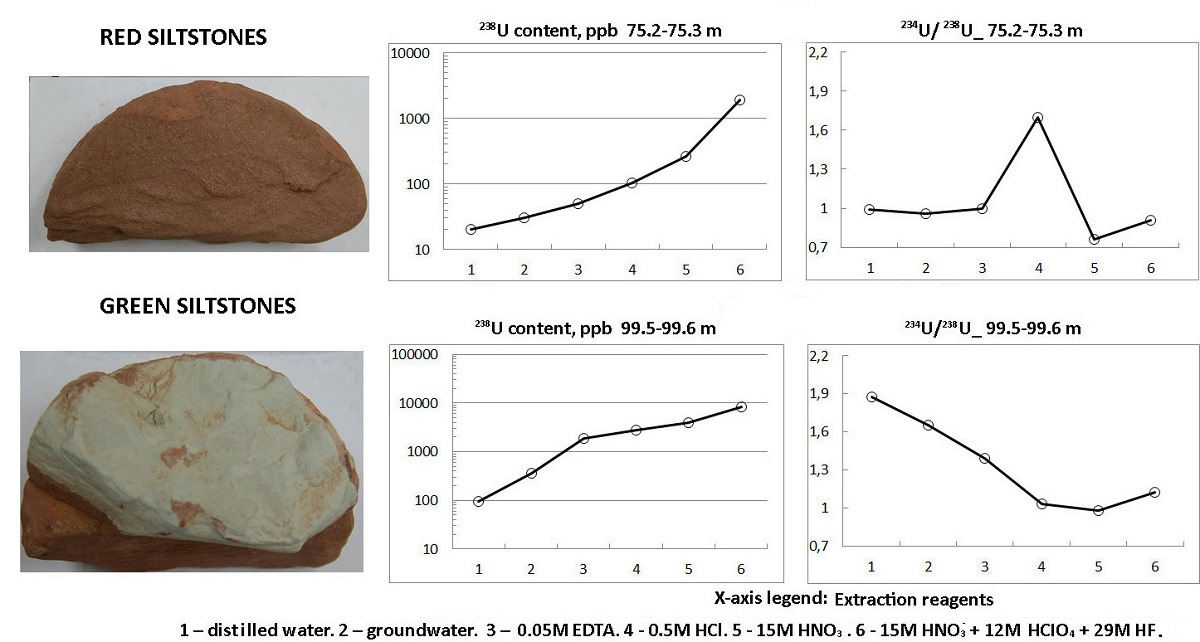A partial extraction procedure was used to study the distribution of uranium in the mineral phases of rocks of an aquifer of sandy-clay deposits of the Vendian in the northwest of Russia. This work is a part of a research project to develop a method for combined radiocarbon and uranium-isotope dating of groundwater. Representative aliquots of each core sample were subjected to five "partial" extractions by treatment with: distilled water, low mineralized fresh natural groundwater, minopolycarboxylic acid chelating agent (0.05M EDTA), 0.5M HCl, 15M HNO3, and a total digestion, with U isotopes reported in this study for each procedure. The following mineral phases of core samples: adsorbed material, carbonate minerals, amorphous iron oxides, aluminosilicates partial digestion and a crystalline iron oxides, aluminosilicates total digestion and a clay/quartz resistate were characterized. Red-colored siltstones depleted in uranium in relatively readily soluble mineral phases. The concentration of adsorbed uranium was established in the amount of 15.8±2.1 - 30.5±3.9 μg/kg. Carbonate minerals contain even less of this element. In iron hydroxides and the most readily soluble aluminosilicates, its concentrations are in the range 168±24 - 212±28 μg/kg. The most insoluble fraction contains 1.65±0.21 - 4.32±0.45 mg/kg of uranium. In green-colored siltstones, the concentration of adsorbed uranium is much higher: 106±14 - 364±43 μg/kg. Carbonate minerals and amorphous iron oxides contain 1.91±0.21 - 2.34±0.26 mg/kg of uranium. In aluminosilicates and a clay/quartz resistate, uranium concentrations are 5.6±0.5 - 16.8±1.4 mg/kg. Elevated values of 234U:238U activity ratio prevail in the adsorbed material and iron hydroxides. In aluminosilicates and clay/quartz resistate, the values decrease. This indicates the replacement of primary sedimentogenic uranium by secondary hydrogenic uranium adsorbed on the surface of minerals and coprecipitated with iron hydroxides. The results obtained made it possible to carry out preliminary quantitative estimates of the retardation factor and recoil loss factor of uranium in the groundwater of siltstones of the studied Vendian aquifer.

